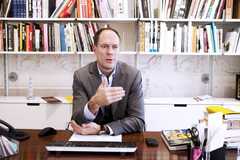Harry Blain / London
The show man
He has been named as one of the most influential men in London, but gallery owner Harry Blain believes his success relies on the trust he has built up with some of the world’s most acclaimed contemporary artists. We catch him between art fairs.
“After being out of the art fairs for a while, it has been good to catch up with everyone again, but it never stops. I’ve just come back from ARCO in Madrid and the Armory in New York, then it’s off to TEFAF in Maastricht where we’re doing a Surrealist booth – showing Dalí and Tanguy, and getting contemporary artists that we work with to respond to those works – so Tony Cragg, Michael Joo, Tim Noble and Sue Webster all doing interesting things. The fairs are so useful for giving you an idea of how people are feeling about their collections, and providing a snapshot of a certain area. The business is about relationships, the human element, that’s why there’s so much travel involved. The fairs are an important point at which collectors, museums, curators, galleries and dealers can come together – in terms of conversation, and transactionally too, of course.
My primary relationships are with artists – I speak to them every day as they evolve their work, create new objects, translate new ideas. It’s an amazing voyage of discovery. Artists never make work for the gallery exclusively; they’re artists, they’d make things whether they had a gallery or not, if anyone was buying it or not. For example, we’re Mat Collishaw’s primary gallery: we’re in London where he lives and we have a close relationship. He’s always been an “artist’s artist”. If you ask a lot of British artists of his generation, they’ll tell you he’s one of their favourites – which is nice, but that’s started to translate into a more international audience of collectors and museums. So we sold all of Mat’s work at the Armory, and the show we had in London sold out in two days. There’s much more recognition of his importance in the contemporary landscape.
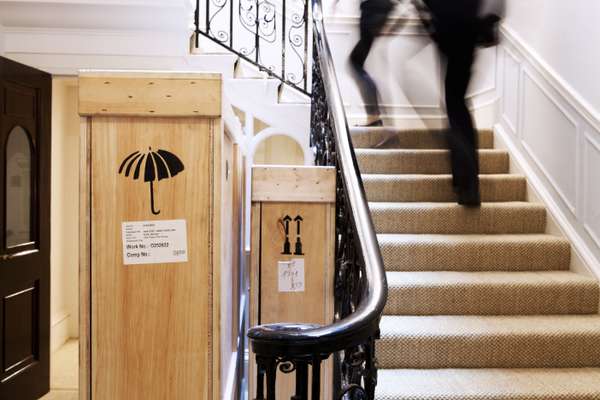
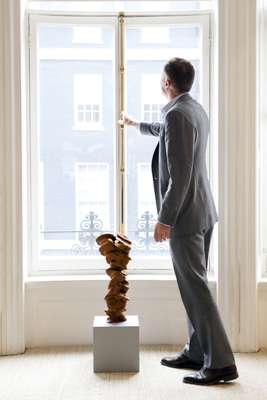

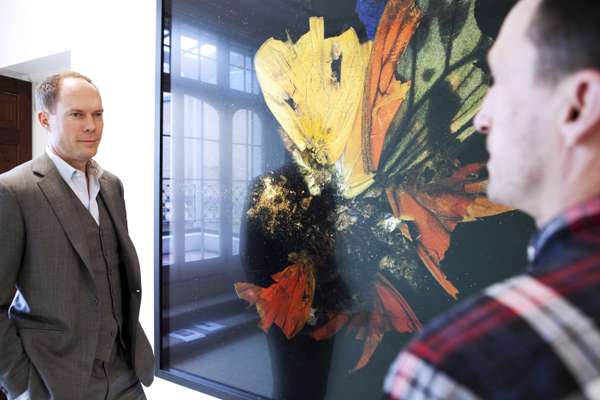

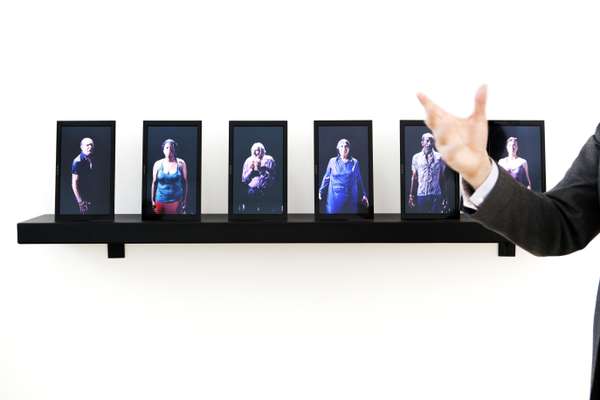
One of the privileges of running a gallery is seeing works in progress. We’re always connected with the artists in their studios to see the evolution of these ideas. From Tim Noble and Sue Webster to Bill Viola in Los Angeles – seeing all this work evolve is a real perk of the job. The relationship between the artist and the gallery is like any: it’s about trust and understanding the work, the message, being able to place the work in the relevant museum or collection that’s going to benefit the work and let it be seen by a larger audience.
One of the fantastic things about the art world is that there’s no such thing as a typical day, there’s always something new being thrown at you. There are common themes. I’ll talk to a number of artists – whether it’s about a work or about dinner. Every day I’ll speak to collectors or museums, telling them what’s going on with a body of work, perhaps, so if they want to acquire it they have a full understanding of what’s happening.
If you’re creating a collection, then talking to a few good galleries you trust and that understand you as a collector, is important. A gallery will already be working with 10 or 20 artists after having looked at thousands – the idea being that those galleries are working with artists who will be historically relevant to contemporary art. You might not like all of the artists, but if you’re talking to those galleries and looking at those artists, at least part of the editing process has been done for you. You’re looking at building a collection with artists that will stand the test of time, and who have made a contribution to our society in terms of contemporary art.
Pairing work with collectors can be a tricky balance, as there’s enormous interest in and demand for the work, but there’s not much of it. Although it’s a nice problem to have, it’s still a problem; if you have 10 or 15 collectors who all want a work, how do you manage that position? We give priority to museums because it’s better for the artist if more people can see it, and the collectors wait for the next one, but we try and ensure collectors get what they want.
With the evolution of the blockbuster show there’s a lot more recognition of work – and in the contemporary market, rightly or wrongly, there was an aspirational social element to it all, which calmed down a lot after the market, you know, changed somewhat in 2008.
I still get a thrill when I see things in progress. There are moments when you go into a studio and there’s an electricity in the air – that’s why we work with the artists that we do. Really, it’s the art and the friendships that keep you going. Every day I get to deal with some extraordinary people and some extraordinary works of art. I’m very lucky.”
The collector
Harry Blain’s CV
1967 Born in Surrey, UK
1992 Founds Blains Fine Art
2001 Marries Bodil Bjerkvik. They have three children
2002 Founds Haunch of Venison with Graham Southern
2005-2008 Opens further galleries in Berlin, New York and Zürich
2007 Sells Haunch of Venison to Christie’s
2010 Leaves Haunch of Venison and launches Blain|Southern
2011 Opens galleries in Berlin and New York
New openings
Harry Blain is empire building, with three galleries in three countries. In the old Der Taggespiegel newspaper works in Berlin, during Berlin Gallery Weekend, Tim Noble and Sue Webster will inaugurate a show partly inspired by the tombs of the Egyptian pharaohs. Blain teamed up with Emanuel DeDonna to open a secondary market gallery dealing in impressionist, modern and contemporary in New York last November, while the gallery on Dering Street, Mayfair, is Blain|Southern’s London base. A further private viewing gallery is around the corner.

